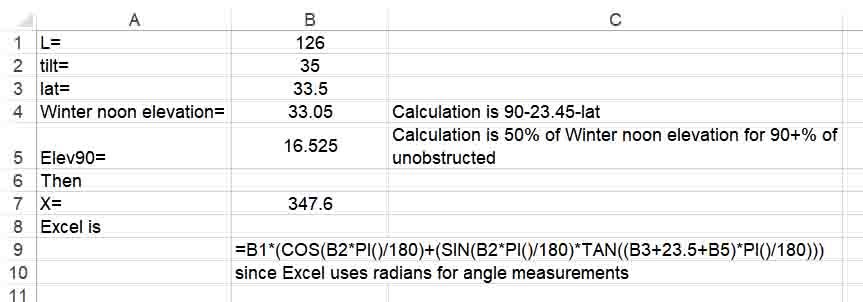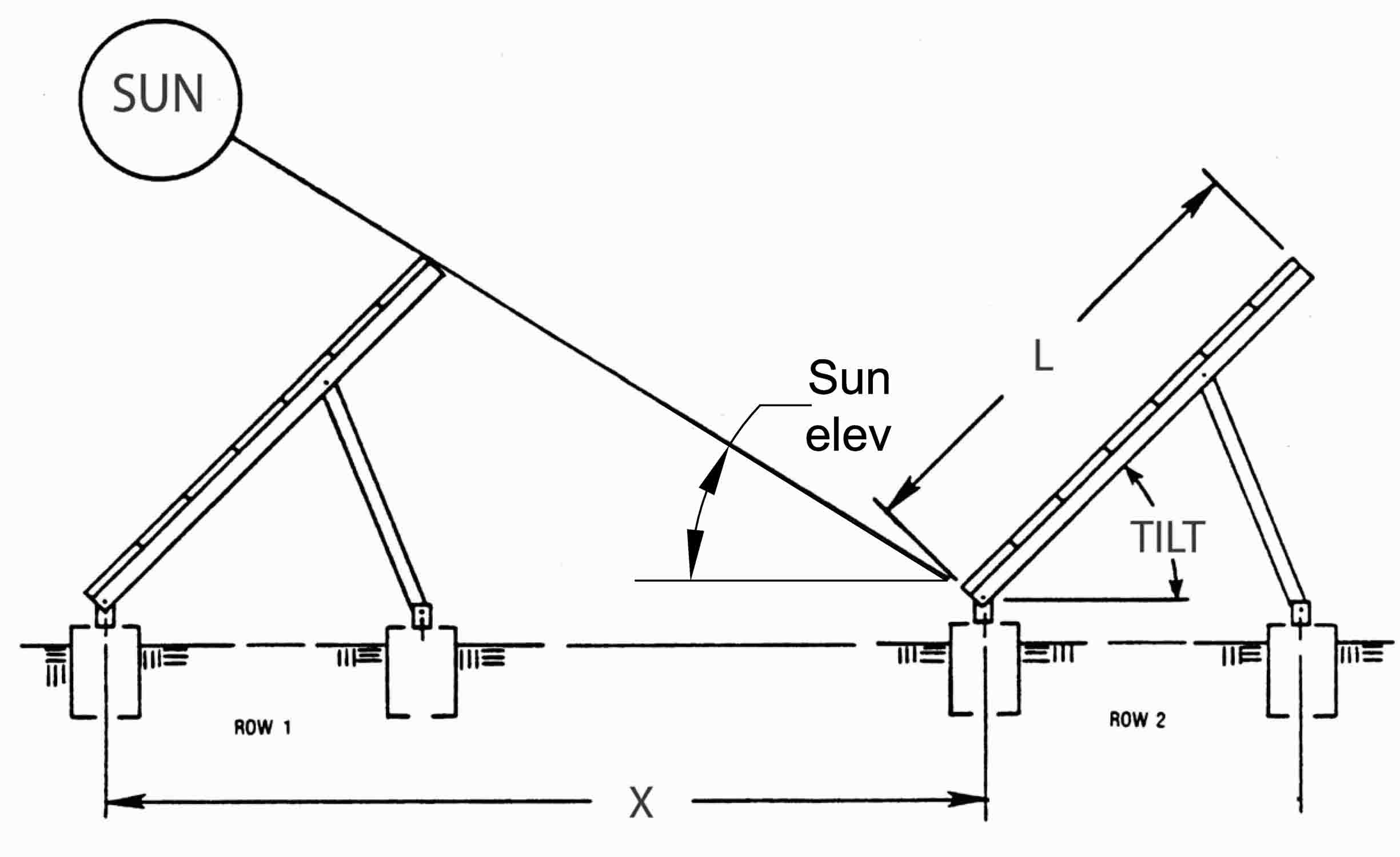If your system consists of two or more rows of PV panels, you must make sure that each row of panels does not shade the row behind it. To determine the correct row-to-row spacing, refer to the figure above.
There is no single correct answer since the solar elevation starts at zero in the morning and ends at zero in the evening. The sunshine (irradiation) on an array has three components, direct beam, diffuse (blue sky and overcast), and reflected from the ground in front of the array. Here we will consider only the direct beam that is subject to shadowing by the row in front (or even a wall).
The elevation of the sun at noon on December 21st in the Northern Hemisphere is basically 90-23.45-latitude (in degrees). In most cases 90% of the unobstructed irradiation on the array occurs when the solar elevation is above 50% of the maximum winter elevation. The elevation correction is therefore 50%. This may be excessive for rows that are less than about 4 times the height of the panel.
To solve for X (the minimum distance between the rows), use the equation below:
X = L (cos(tilt)+ (sin (tilt) * tan (lat + 23.5+(50% of elevation))))
Where
L = panel length
tilt= panel tilt angle
lat= geographic latitude of your system.
Calculated values are:
Winter minimum noon solar elevation = 90-23.45-latitude
90% of unobstructed elevation = 50% of Winter minimum solar elevation
The Excel spreadsheet version of this is:

The Excel formula can be copied >>> =B1*(COS(B2*PI()/180)+(SIN(B2*PI()/180)*TAN((B3+23.5+B5)*PI()/180)))


